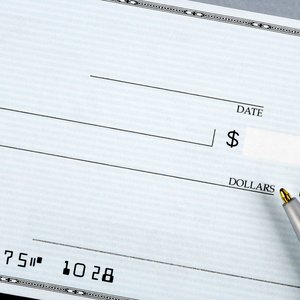
A personal check is a paper or electronic instrument you use to draw money from a checking account directly. You can use a personal check instead of cash to pay a bill, make a purchase, move money in and out of your bank account and transfer cash to others.
How Personal Checks Are Regulated
Banks must adhere to federal and state regulations regarding the handling of personal checks. Those responsible entities include:
- The Office of the Comptroller of the Currency regulates national banks.
- The Federal Reserve regulates state-chartered banks belonging to the Federal Reserve System. It also regulates bank holding companies and other bank-related institutions.
- The Federal Deposit Insurance Corporation (FDIC) regulates state banks that do not belong to the Federal Reserve System.
- The National Credit Union Administration controls credit unions.
- States are the state-chartered bank and credit union regulators.
Articles 3 and 4 of the Uniform Commercial Code (UCC) govern the writing, deposit and collection of checks, electronic funds transfers (EFTs) and other negotiable instruments. Various federal and state laws regulate how and how quickly checks are to be paid and how to handle irregularities.
Rules for Check Writing
The most basic type of personal check is a printed piece of paper containing the check number, name of the bank, its routing number and your check account number. It may have the name of the account holders and other identifying information printed on it. A check writer enters:
- The current date.
- The payee’s name goes on the line that says “Pay to the Order of.”
- The check amount is entered in words and numbers.
- Your signature, and possibly the signature of an account co-owner, is affixed to the check front.
- An optional memo can be entered containing additional information.
You use the same data to issue electronic checks online, with a debit card or through a mobile app. These do not require physical handling and can quickly transfer money from your account to the recipient’s account.
Check Cashing or Depositing Rules
Payees can cash checks, deposit them into checking accounts or do both. Anyone can cash or deposit a check made out to “Cash.”
Payees must sign the back of checks before cashing them. To deposit checks, payees should write “For deposit only” next to their signatures. You can split a check between cash and a deposit at a bank branch or ATM. Some banks permit payees to endorse a check to a third party.
Other Types of Checks
In addition to personal checks in paper or electronic form, you may need special checks, including:
- Official, bank or cashier’s check: This is a check a financial institution guarantees to pay. A teller withdraws money from your checking account to fund the check. This kind of check won’t bounce and charges a fee.
- Certified check: This is another type of guaranteed check. The bank puts a hold on the necessary funds in your account until the check clears.
- Money order: This is a prepaid certificate that acts like a check. You don’t need a bank account to buy these. Traveler’s checks are similar.
Giant checks handed to lottery winners or charity recipients look real but are not negotiable – they’re props.
Consequences of Bounced Checks
A check will “bounce” (i.e., be rejected) if the writer’s account doesn’t have sufficient funds to pay it. The payee won’t receive the funds from a bad check, and steep fees may punish the writer. Banks may offer various types of overdraft protection to help you avoid bounced checks.
Use of Direct Deposits
A direct deposit is essentially an electronic check (or e-check). It puts money into a bank account without needing a paper check. The Automated Clearing House (ACH) transfers direct deposits between accounts electronically, so the payments are also called EFTs. Direct deposits help ensure the timely delivery of funds without worrying about a check getting lost.
References
Writer Bio
Eric Bank is a senior business, finance and real estate writer, freelancing since 2002. He has written thousands of articles about business, finance, insurance, real estate, investing, annuities, taxes, credit repair, accounting and student loans. Eric writes articles, blogs and SEO-friendly website content for dozens of clients worldwide, including get.com, badcredit.org and valuepenguin.com. Eric holds two Master's Degrees -- in Business Administration and in Finance. His website is ericbank.com.

